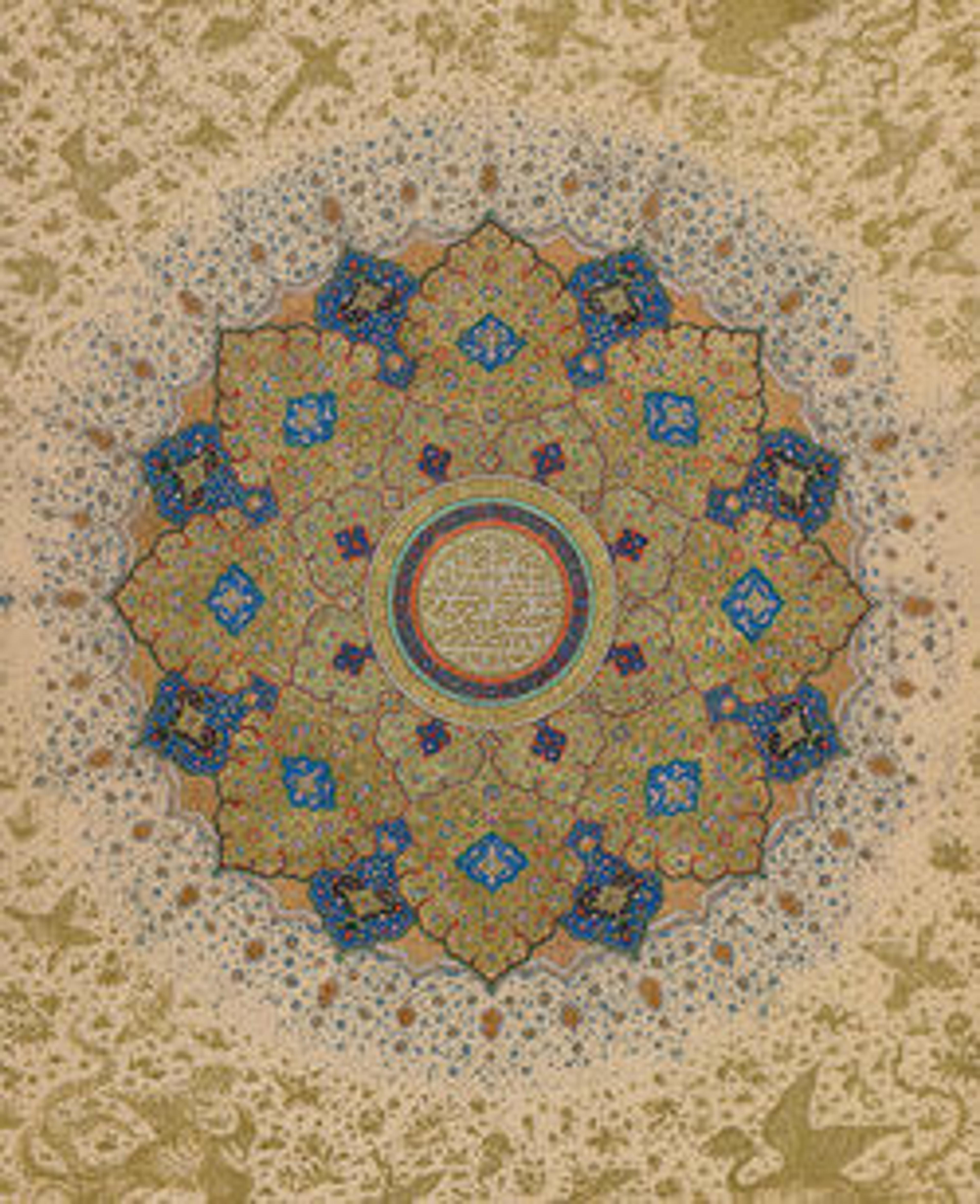Textile Fragment
Expensive materials were woven in a sophisticated technique, using silver and metal-wrapped silk, to produce a rare and precious type of Ottoman silk fabrics called seraser. Few examples survive from the early period of production dating from the first half of the sixteenth century. They are usually woven in designs and motifs quite different from the typical Ottoman artistic language, organized in narrow horizontal bands of small-scale decoration. Here, blue diamond-like rectangles, each bearing eight-petalled silver blossoms, are framed by red borders composed of two intertwined silver ribbon-like forms. These wider bands alternate with narrower white-ground bands containing blue undulating vines. The overall effect results from the richness of colored silk accented with the silvery sheen of the metal-wrapped thread. While the later seraser pieces were mainly produced for ceremonial robes, the use of the earlier ones still remains enigmatic.
Artwork Details
- Title: Textile Fragment
- Date: first half 16th century
- Geography: Made in Turkey, probably Istanbul
- Medium: Silk, metal wrapped thread; taqueté (seraser)
- Dimensions: Textile: H. 17 7/8 in. (45.4 cm)
W. 5 3/4 in. (14.6 cm) - Classification: Textiles-Brocades
- Credit Line: Purchase, Rogers Fund, Louis E. and Theresa S. Seley Purchase Fund for Islamic Art, and The Page and Otto Marx Jr. Foundation Gift, 2003
- Object Number: 2003.519
- Curatorial Department: Islamic Art
Audio
6652. Overview: Ottoman Textiles - Seraser
0:00
0:00
We're sorry, the transcript for this audio track is not available at this time. Please email info@metmuseum.org to request a transcript for this track.
More Artwork
Research Resources
The Met provides unparalleled resources for research and welcomes an international community of students and scholars. The Met's Open Access API is where creators and researchers can connect to the The Met collection. Open Access data and public domain images are available for unrestricted commercial and noncommercial use without permission or fee.
To request images under copyright and other restrictions, please use this Image Request form.
Feedback
We continue to research and examine historical and cultural context for objects in The Met collection. If you have comments or questions about this object record, please contact us using the form below. The Museum looks forward to receiving your comments.
